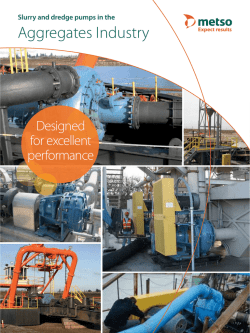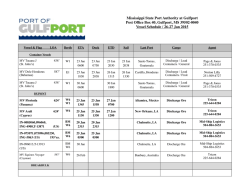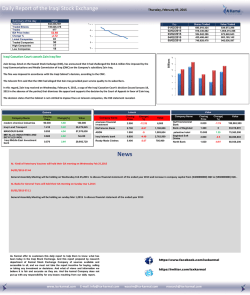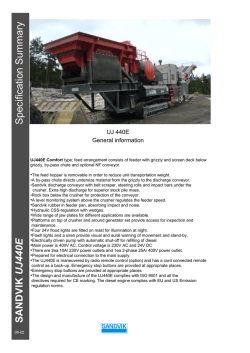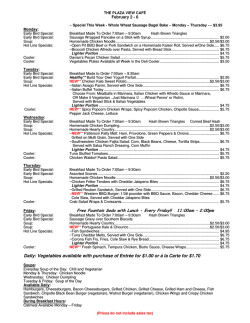
Metso pebble lime cooler operation
Technical specification Metso pebble lime cooler operation The Metso Pebble Lime Cooler, based largely on a previous L. H. Niems design, is a proven, efficient piece of heat transfer equipment. Its primary purpose, along with that of its associated discharge feeders, is to cool the material discharging from the rotary kiln to a temperature that can be tolerated by the product take-away belt conveyor, all the while maintaining the material discharge rate required for the desired rate of lime production. To accomplish this several PLC-based, “closed loop” (or automatic) controls are employed. In order to maintain an even and continuous transfer of heat within the cooler, two basic conditions must exist: a fairly constant packed bed of material in the cooler and a fairly constant flow of cooling air throughout the bed. To maintain an optimum bed of material within the cooler an automatic level control is used. A microwave (or “radar”) type of level sensing device is installed near the top of the cooler to sense the relative height of the material bed. (See Figure 1, below.) The height of the bed is typically set to be controlled within a high-low range of about 6 inches. Rotary Kiln Level Sensor © Metso Corporation, TS Metso pebble lime cooler 15-01-en Firing Hood Cooler is directly below, beneath concrete floor, out of view. Figure 1. Typical cooler level sensor installation For more information, contact your local Metso representative. www.metso.com Metso Minerals Industries Inc. 350 Railroad Street, Danville, PA 17821-2046, USA, Phone: +1 570 275 3050, Fax: +1 570 275 6789Specifications in this document are subject to change without notice. Product names in this publication are all trademarks of Metso Corporation. Firing Hood Cooler Level Sensor mounted this side out of view Oversize Material Discharge Cooler Cooling Air Distributors © Metso Corporation, TS Metso pebble lime cooler 15-01-en Cooler Discharge Feeders (4) Figure 2. Typical firing hood / Cooler assembly For more information, contact your local Metso representative. www.metso.com Metso Minerals Industries Inc. 350 Railroad Street, Danville, PA 17821-2046, USA, Phone: +1 570 275 3050, Fax: +1 570 275 6789Specifications in this document are subject to change without notice. Product names in this publication are all trademarks of Metso Corporation. Cooling Air Inlets Technical specification The cooler is a stationary, cube-shaped vessel that is divided into four discharge quadrants at the bottom, each having its own discharge ”spout” with an electro-magnetic vibratory feeder at the outlet. (See Figure 2.) These four discharge feeders cycle ”on” and ”off” as required to maintain the desired bed height in the cooler. That is, when the bed level rises above the high level setpoint, the feeders are automatically turned ”on” to discharge material to the product storage and handling system. As the height of the bed in the cooler decreases and passes through the low level setpoint, the discharge feeders are automatically turned ”off”, allowing the bed of material within the cooler to, again, accumulate. This control loop is designed to have the discharge feeders running approximately 65 to 75 percent of the time. With the above two control loops functioning, a ”coarse” control of heat transfer is maintained. The ”fine” control is maintained through an additional closed loop control in the programming. © Metso Corporation, TS Metso pebble lime cooler 15-01-en Two thermocouple type temperature sensors are installed in each of the four cooler discharge spouts. The temperatures obtained by each pair of thermocouples are averaged and reported as the material discharge temperature for each spout. In a perfect world the temperature of the material discharging from each of the four cooler discharge points would be exactly the same as the others. The cooler discharge temperature control programming is written to ”attempt” to achieve such a condition. Before this automatic loop is put into play, however, there is a manual step taken during the initial start-up of the lime calcining system. The ductwork carrying the cooling air from the fan to the cooler actually divides the air into four individual streams as it enters the cooler. Each one of these four ”mini-ducts” directs cooling air to one of the four cooling quadrants within the cooler and has its own manually adjustable airflow damper. During initial start-up, (before the cooler discharge temperature control is placed in ”auto”), the four discharge temperatures are noted and the manual dampers are adjusted in such a way as to bring each of the discharge temperatures closer to the average of the four. (There is a fifth cooling air stream. A small portion of the cooling air provided by the Cooler Air Fan is taken off of the main stream through a separate, dampered duct specifically to supply cooling air to an elevated center air distributor nearer the top of the material bed. See Figure 2.) Once this gross adjustment is made to the set of lime product discharge temperatures, by re-positioning each of the four dampers as required, the subject dampers are typically never moved again. Once the initial operation of the calcining system is well under way and it reaches a ”steady state” condition, the cooler discharge temperature control can be placed in ”auto”. This control loop uses the average of the two temperatures at each discharge and compares it to the average temperature for the four discharge points. As the temperature of a given discharge moves away from the overall average, the speed (vibration rate) of the feeder at that discharge point is increased or decreased, accordingly. This is to say, when the cooler level control has sensed that the upper level setpoint has been reached and has called for the discharge feeders to be ”on”, the speed of feeders below the spouts indicating higher than the average discharge temperature will be slowed down. This keeps the material in these quadrants of the cooler longer, allowing it to cool further. Conversely, the speed of the feeders below the spouts indicating lower For more information, contact your local Metso representative. www.metso.com Metso Minerals Industries Inc. 350 Railroad Street, Danville, PA 17821-2046, USA, Phone: +1 570 275 3050, Fax: +1 570 275 6789Specifications in this document are subject to change without notice. Product names in this publication are all trademarks of Metso Corporation. Technical specification A constant flow of cooling air is supplied to the cooler by the Cooler Air Fan. This is achieved using a simple airflow control loop. An airflow sensor is installed at the inlet of the fan. Feedback from this sensor is used either to position an airflow damper at the fan’s inlet, or to modulate an AC variable frequency controller in the fan’s drive, to supply a greater or lesser flow of cooling air to achieve the setpoint flow rate. © Metso Corporation, TS Metso pebble lime cooler 15-01-en To summarize the function of the cooler discharge feeders… They cycle ”on” and ”off” as a group to control the level of material within the cooler and in turn, the desired rate of production. They speed up or slow down, individually, to maintain the desired discharge temperature at each discharge point, when they are ”on”. The ”primary” control over cooler operation is the level control. Control of the temperatures at the four material discharge points is considered the ”secondary” control. The more often the production rate of the calcining system is changed and the more the characteristics of the material being calcined vary, the more the lime kiln operator will benefit from these adaptive, ”closed loop” cooler controls. Figure 3. Typical cooler control screen. (Sensor location information added for clarity.) For more information, contact your local Metso representative. www.metso.com Metso Minerals Industries Inc. 350 Railroad Street, Danville, PA 17821-2046, USA, Phone: +1 570 275 3050, Fax: +1 570 275 6789Specifications in this document are subject to change without notice. Product names in this publication are all trademarks of Metso Corporation. Technical specification than the average discharge temperature will be increased. Because certain feeders will reduce material discharge, while others will increase it, the net effect is a more-or-less constant overall rate of discharge (production). This modulation of individual feeder speeds is continuous so long as the cooler level control has the feeders turned ”on”. When the lower level setpoint is met all four feeders are turned ”off”. It is important to note that in the ”off” condition the feeders are still vibrating at a very low amplitude to maintain a ”dribbling” of material through the discharge points. This is done to give the material bed some movement in order to inhibit agglomeration or bridging during the ”off” cycle. Figure 3 shows a typical cooler control screen that a kiln operator would use to monitor cooler operation and affect change when necessary.
© Copyright 2026
